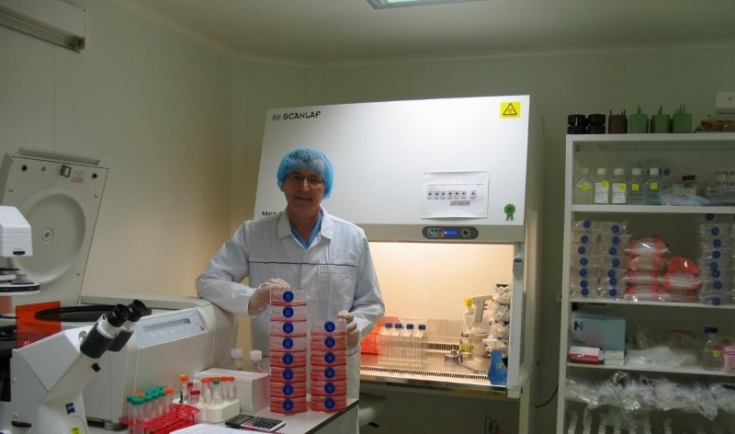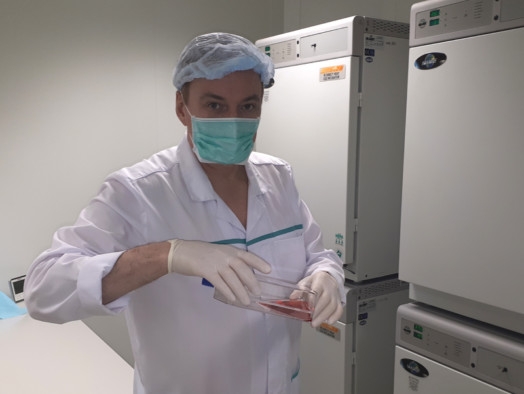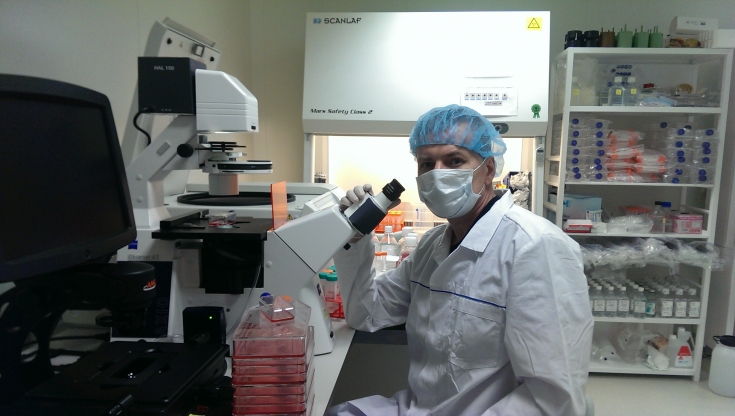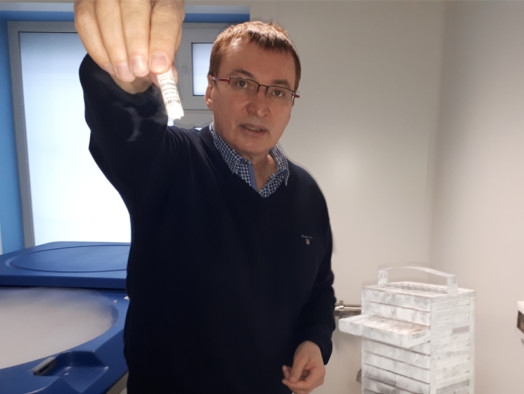Cell technologies can safely be called one of the most important areas of modern medicine. With the help of cells, it is possible to restore damaged tissues, which is why these technologies are widely used in completely different areas of medicine, including aesthetics.
The most important novelties of cellular technologies and the possibilities of their application in aesthetic medicine were discussed especially for estet-portal.com by Ph.D. SPRS Therapy® (officially approved for use by the regulatory authorities of the Russian Federation) and Skin Passport® Vadim Zorin.
What are the possibilities of using cellular technologies in modern medicine?
V.Z.: At present, international medical practice officially allows the use of hematopoietic stem cells of the bone marrow, peripheral and umbilical cord blood.
These cells are widely used for the treatment of oncohematological diseases, diseases of the blood and the immune system. For these purposes, in particular, & nbsp; hematopoietic cells of the bone marrow are actively used. According to the bone marrow registry, a donor is selected, from whom, after signing an informed consent, a red bone marrow aspiration is performed, after which the resulting cell aspirate is transplanted to a patient with oncohematological pathology.
Cell technologies are being used to treat about 85 different hematological diseases. To date, a drug based on – cord blood hematopoietic stem cells, and it is already actively used there.
Clinical studies are also under way to use stem cells such as mesenchymal stem cells (MSCs) to treat a range of diseases. These cells, capable of differentiating in osteo-, chondro-, adipo- and myogenic directions, & nbsp; have been discovered and described in 1968 in the bone marrow by Russian scientists & nbsp; AND I. Friedenstein and his colleagues.

Today, MSCs are obtained from almost all tissues of the human body. Currently, more than 200 clinical studies are being conducted for the treatment of diseases of the musculoskeletal, cardiovascular, nervous, urogenital and immune systems, diabetes, diseases of the liver, lungs, skin wounds of various origins and others.
But this is only research so far, and if they end positively – then preparations based on these cells can be used in clinical practice. It should also be noted that drugs based on autologous chondrocytes, which are used in a number of countries, for example, in Germany, for the treatment of joints.
How are cell technologies used in modern aesthetic medicine?
V.Z.: In aesthetic medicine today, several cellular products are used.
This is a stromal-vascular cell fraction isolated from adipose tissue, which is used in lipofilling, as well as in the correction of cicatricial and ischemic skin changes.
Platelet-Rich Plasma (PRP), which, of course, can be attributed to cellular products with some stretch, since platelets & nbsp; are not cells, but in PRP contains a large number of growth factors and cytokines, which, after their introduction into tissues, have a stimulating effect on a number of cells: endothelial, keratinocytes, fibroblasts.
Learn more: PRP - menopausal therapy for the correction of intimate areas.
And third product – autologous (own) skin fibroblasts – received international recognition. In the Russian Federation, this product is used under the brand name SPRS Therapy®, in the USA - LAVIV® (azficel-T) by Fibrocell Science.
Today, we actively use SPRS-therapy®, which is based on the use of autologous skin cells of the patient - fibroblasts.
V.3.: SPRS Therapy® performed to correct age-related changes in the skin of the face, neck, décolleté and hands. In addition, SPRS-therapy® can be used both for correction of cicatricial changes in the skin, and for restoration of the skin in case of its thinning after peelings and plastic surgeries.

We also have positive experience with SPRS therapy® in the treatment of focal psoriasis. At the same time, autologous skin fibroblasts can be used not only for aesthetic correction, but also for the treatment of burn patients.
There is such a thing as the dermal equivalent of the skin, which is a kind of matrix, for example, based on collagen or PRF-membrane, on which autofibroblasts are immobilized and then used to treat skin wounds.
It is interesting to note that today several leading laboratories from a number of countries are working on the creation of three-dimensional tissue-engineered constructs (TEC) & nbsp; for auricle reconstruction.
For this purpose, the possibilities of using autologous chondrocytes isolated from from a biopsy of the patient's nasal septum or from postoperative ear cartilage fragments.
Also of interest MSCs (autologous, isolated from the patient's bone marrow or fat, and allogeneic, isolated from the umbilical cord of newborns), induced in the chondrogenic direction.
These cells in TECs have been shown to produce cartilage-specific type II collagen and other important components to promote new cartilage formation.
Learn more: Why are cell technologies in cosmetology becoming more and more popular?

V.Z.: I would also like to mention drugs based on the use of allogeneic skin cells, which are successfully used in the USA and European countries to restore the integrity of the skin in burn patients, as well as with & nbsp; chronic skin wounds of various etiologies.
One of the most successful representatives of this group is the commercial product Apligraf® (Organogenesis, USA), which is a biodegradable matrix based on type I bovine collagen with allogeneic neonatal fibroblasts and allogeneic keratinocytes.
The effectiveness of this product is shown in the treatment of trophic ulcers of the lower extremities – more than 250 thousand clinical observations have already been carried out.
Another successful tissue engineering product is Dermograft® (more than 50 thousand observations) of the company Advanced Biohalin (USA), which used fibroblasts of the foreskin of newborns with a high proliferative potential, on a biodegradable vicryl mesh scaffold.
Despite the fact that the product is allogeneic and therefore rejected, the results of clinical use indicate its ability to repair the dermis and stimulate the migration of keratinocytes.
Learn more: Cosmetology of the present and future: the use of stem cells.

Is it important to have a skin diagnosis before using cell technologies or other cosmetic procedures?
Q.Z.: Yes, it's very important. In particular, we have developed an original technology called Skin Passport® - diagnostic procedure to determine the regenerative potential of the skin.
In my opinion, without knowledge of these skin indicators, it is generally impossible to carry out any traumatic cosmetic procedure. For example, when a patient goes to an appointment with a doctor of any other specialty, in order to prescribe competent treatment, he must pass tests.
In clinical practice today this is the norm, but in aesthetic medicine, unfortunately, it has not yet received proper development. Carrying out this procedure would allow not only to use this or that cosmetic procedure more effectively, but also prevent the development of side effects during, for example, the same CO2 laser resurfacing.
In the Russian Federation, make a Skin Passport® available at the Human Stem Cell Institute. Patients undergoing SPRS® therapy also receive a Skin Passport®. The doctor, conducting both SPRS-therapy & reg;, and other cosmetic procedures, necessarily focuses on the indicators of the regenerative potential of the patient's skin, on the basis of which & nbsp; and draws up an individual skin rejuvenation program for him.
This keeps the patient's skin in good condition at all times, avoiding any complications.
When working with patients who have a low regenerative potential, it is correct to start with SPRS-therapy®, and only then carry out other cosmetic procedures.
V.Z.: To be honest, I myself “fell for this bait” at one time: presumptuous, not taking into account the indicators of the regenerative potential of the skin (and they are, to put it mildly, low ), used a CO2 laser and got a rather serious complication associated with degeneration of the facial skin.
But, fortunately, we have SPRS therapy®, with which I replenished the depleted population of fibroblasts in my skin, thereby restoring its structure and function.







Add a comment